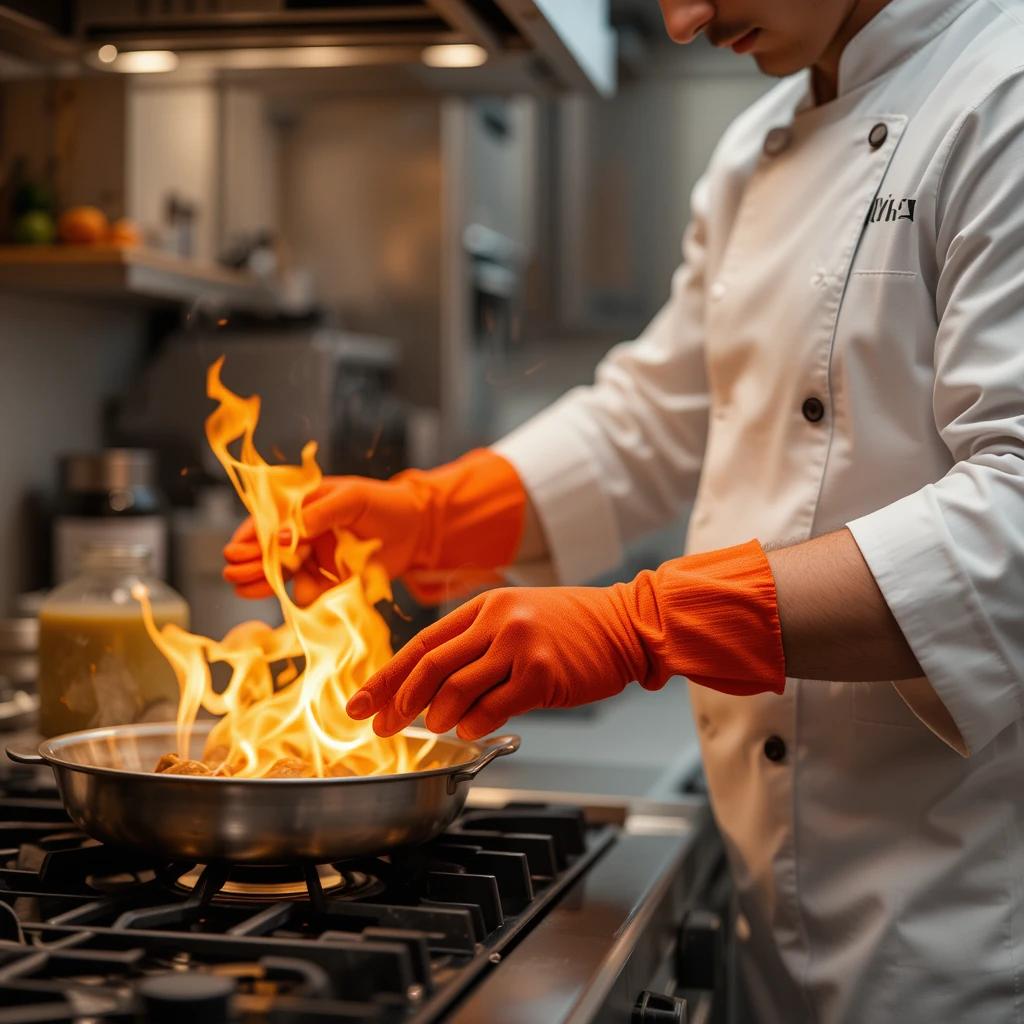Frequently the heart of the home, the kitchen is where delicious smells, laughter and the occasional botched cooking experiment can be found. But it’s also one of the most dangerous places in any home. According to the National Fire Prevention Association (NFPA), cooking fires top the list of causes of home fires and home injuries. Whether you are a seasoned chef or a casual weekend baker, it is important to know how to prevent kitchen fire to help keep your family and your home safe.
This ultimate guide will take you through everything you need to know from identifying common fire hazards to practicing smarter safety. So grab a cup of coffee and read on to learn how to keep your kitchen safe.
Most Common Reasons for Kitchen Fires
Before we discuss how to prevent kitchen fires, you need to know what typically causes them. Safety starts with awareness.
Grease Buildup
Grease fires are common and extremely dangerous. Over time, grease on pans, stovetops, and even the range hood will naturally build up; all it takes is for this to be exposed to sustained high heat, and it can ignite.
Pro Tip: Make sure to periodically clean your stovetop, oven, and range hood to prevent grease buildup.
Unattended Cooking
We’ve all wanted to turn our backs on something bubbling away on the stovetop. But unfortunately, leaving cooking food (especially in the stove) unattended is among the top causes of kitchen fires. A few minutes without monitoring can spell disaster.
Pro Tip: If you need to step away from the stove, immediately turn off the burner, or use a timer to alert you to return.
Burnable Materials Around Heat Sources
Potholders, dish towels, paper towels and even plastic utensils can ignite when placed too closely to burners.
When storing, always keep items that are flammable a distance away from heat source.
Safety Equipment You Need in Your Kitchen
When it comes to fire safety in your kitchen, the right tools can make all the difference.
Install Smoke Alarms
Ensure that you have smoke detectors, both outside and inside the kitchen. Monthly, check the batteries to ensure they are working.
Use Fire Extinguishers
Have a Class K fire extinguisher, which is made for oil and grease fires, nearby. So, learn how to use it.
Keep a Fire Blanket Handy
For small fires, particularly those on a person or stovetop, a fire blanket can quickly smother them.
Pro Tip: Keep these items out in the open, but store them away from the main cooking area to keep them from becoming vulnerable to retrieval-in-a-fire.
Safe Cooking Practices
Simple good habits in the kitchen can greatly reduce your chances of a fire.
Get in the Kitchen and Stay There While You Cook
This is not negotiable, particularly when frying, grilling or broiling. These techniques create high heat, which can quickly ignite food or oil.
Keep Cooking Areas Clean
Food spills, grease and crumbs are all fire hazards. They prepare the spell, regardless of how dirty.
Monitor Food Closely
Frying has a particular risk because oil gets hot fast. And even a little bit of splash can cause a fire.
Tip: A thermometer helps you keep your oil at a safe temperature. Flash points for most oils are between 350°F and 475°F.
Store Everything Smartly
Proper storage is the best way to avoid kitchen fires.
Keep Flammable Materials Out of the Heat
Cooking Oils, Paper Products or Other Flammable Goods Never Place Near Your Stovetop or Oven
Organize Your Pantry
A messy cupboard will make it less likely you can easily reach under your nose to grab what you need, which raises the likelihood of someone accidentally leaving a flammable material beside a heat source.
Get Rid of Expired Things the Right Way
The cooking oils and other materials that have spoiled can be unstable and more combustible.
Electrical Safety Measures
Kitchens sometimes have several appliances, and electrical problems can trigger fires, too.
Inspect for Frayed Wires and Damaged Appliances
Replace or repair broken cords on appliances immediately.
Avoid Overloading Outlets
Overloading a single outlet with too many appliances can lead to overheating and fires.
Use Appliances Properly
Always refer to the manufacturer’s recommendations for using your kitchen appliances. Such use can cause the microwave to malfunction or raise the risk of a fire.
Be Prepared for Emergencies
So, sometimes no matter how hard we try, fires still occur. Preparation can do wonders.
Create a Fire Escape Plan
Make sure all household members know how to safely exit the home in the event of a fire in the kitchen.
The Basics of Using a Fire Extinguisher
Owning an extinguisher is one thing, knowing how to use it another. Get to know the PASS technique, and help your household learn it:
- Pull the pin.
- Point the nozzle toward the bottom of the fire.
- Squeeze the handle to dispense the extinguishing agent.
- Move the nozzle from side to side as you continue to spray until the fire appears to be out.
Practice Fire Drills
Frequent practice can ensure that everyone knows how to act in the event of an emergency.
Build a Safer Kitchen Today
Fireproofing your kitchen is about being proactive. By familiarizing yourself with the most common causes of fires, having the right kitchen safety equipment, the right habits, and the right emergency plan, you can help to mitigate the risks significantly! Keep in mind, fire safety is everyone’s responsibility — make sure that everyone in your household is educated and ready.
You’re welcome to share this guide with friends, family and other home cooks. Trauma Informed Life For Every Kitchen Safety!

